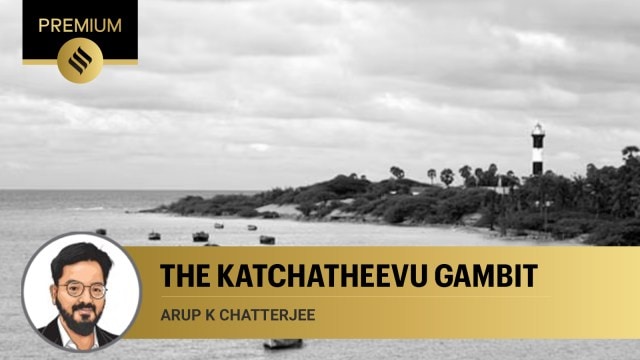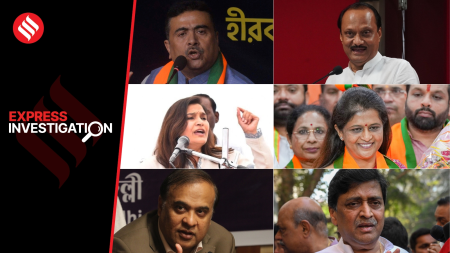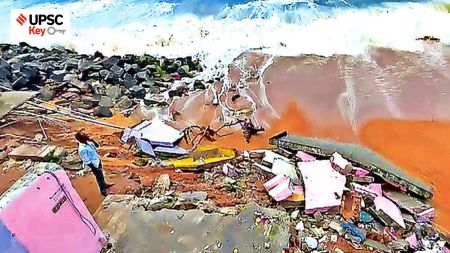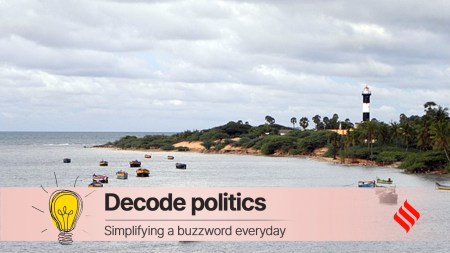- India
- International
Katchatheevu controversy: Sound and fury signifying nothing
Its cession was act of masterful bilateral and international diplomacy. Idea of the current controversy is to deflect attention from national, bilateral and global emergencies
 The island was ceded by the Indira Gandhi government to the Sirimavo Bandaranaike Lankan administration in 1974. (Photo: Wikimedia Commons)
The island was ceded by the Indira Gandhi government to the Sirimavo Bandaranaike Lankan administration in 1974. (Photo: Wikimedia Commons)Katchatheevu is a 285-acre uninhabited Indian Ocean territory. The island is known for Antony’s Church which Lankan and Indian pilgrims visit annually. It was built in 1905 by Ramnad merchant Seenikuppan Padayachi, intended as a halfway ground for Indo-Lankan fishers for drying nets or asylums during tempests. The island was ceded by the Indira Gandhi government to the Sirimavo Bandaranaike Lankan administration in 1974. The notion of Katchatheevu’s so-called “callous” handover is full of sound and fury signifying nothing, except the egregious inattention to the historical and geostrategic contexts surrounding it.
Katchatheevu is an unofficial battlefield between Indian Tamil fishers and a Sinhala-dominated Lankan navy. This is owing to complex factors like excessive trawling in the Sethusamudram region, contested legacies of the Lankan civil war, and the bilateral irresolution of the Tamil question. At least three important factors are ignored when public imagination scapegoats the transactors of the Indo-Lankan agreements of 1974 and ’76 that were meant to secure the division of the maritime boundaries in the Palk Bay and Gulf of Mannar.
First, the discord was an invention of the 1920s, and the hypothesis that it resulted from a latent British colonial impulse to divide and rule the Indian subcontinent begs attention. India’s “loss” was minuscule compared to prospective strategic and political threats emanating from Lankan territories and partners.
Second, whenever the Katchatheevu crisis recurs in India’s political discourses, India’s cessions of land territories to Bangladesh and Pakistan are ignored, eradicating the larger context of postcolonial land redistributions.
Third, Katchatheevu’s cession not only boosted Lankan political self-esteem but also resurrected India’s magnanimous diplomacy, which, at international forums, such as the UN, reaffirmed the nationalistic outlook of the Gandhi administration, especially after India’s role in the Bangladeshi War of Liberation. Consequently, the then-Indian High Commissioner to Sri Lanka, Vincent Coelho, described the session as “a masterstroke of statesmanship to the satisfaction of both India and Ceylon.”
The colonial hangover

Originally a part of the Ramanathapuram (Ramnad) Zamindari, under the auspices of the Sethupathis, Katchatheevu’s history dates back to at least the 13th or 14th century. From the 1760s to the late 19th century, a number of leases issued in favour of the Dutch and British East India Companies signified that Katchatheevu was a sovereign Indian territory. This was bolstered in the judgment in Annakumaru Pillai V. Muthupayal (1904) and reaffirmed in a 1913 lease signed between the Raja of Ramnad and the Secretary of State for India in Council, which described Katchatheevu’s location to be in the Palk Bay — an Indian territory. A 1922 Imperial Records Department report on the “Ownership of the Island of Kachitivu [sic]” also legitimises India’s historic claim over Katchatheevu.
However, on October 24, 1921, the seeds of discord between India and Sri Lanka were sown in an act of “brinkmanship” (as described by V Suryanarayan) by Ceylon’s Principal Collector of Customs, B Horsburgh. Horsburgh’s reputation as a maverick antiquarian (and his proximity to Lankan polymaths like Ananda Coomaraswamy) rattled the Indian delegation, which failed to produce an apt rejoinder to his outlandish claim that Katchatheevu was part of Lankan colonial territory thanks to the island’s St. Antony’s Church being a property of the Catholic Diocese of Jaffna.
The negotiation created an Indo-Lankan Fisherie’s Line three miles west of Katchatheevu. Although this was not an official maritime boundary line, nor was it ratified by the Secretary of State, an ad hoc imagined littoral border emerged. Sensing postcolonial Sri Lanka’s engineered fetish to possess the deserted wasteland, Indira Gandhi agreed to cede the island — which contained no practical, political, or even pastoral value — to its littoral neighbour.
A diplomatic masterstroke
Katchatheevu’s cession was an act of drowning the colonial divide-and-rule policy in the Indian Ocean. In return, the Indian administration secured the Indian Ocean as a zone of peace in the face of growing American and Soviet regimentation; continued friendship with Sri Lanka in the face of an increasingly volatile South Asian neighbourhood; the reprioritisation of the question of Lankan Tamil expatriates whose roots date back to the establishment of 19th century colonial tea estates in Ceylon; cessation of the Ceylon’s Sinhalese-Tamil conflict of the 1970s instigated by the radical Sinhalese communist group, Janatha Vimukthi Peramuna (JVP) and bilateral agreements that legalised the free mobility of Indian pilgrims and fishers to Katchatheevu.
However, successive Indian administrations, especially during and after the Lankan Civil War, were not successful in enforcing the agreements. In 2018, Sri Lanka amended its Regulation of Foreign Fishing Boats Act (1979) to amplify the penalty levied on trespassing foreign vessels to charge anything between six million and 175 million SLR. This cannot be blamed on the Indian administrations of the 1970s and ’80s. Similarly, in 2022, a year after India came to Sri Lanka’s economic aid in the hour of its catastrophe, a Lankan court asked 13 arrested Indian fishers to pay a fine of Rs 10 million. The arrests of Indian Tamil fishers have continued unabated since the Lankan civil war and even after its cessation in and around Katchatheevu.
Other issues require urgent focus. These include Tamil Nadu’s continued incentivisation of trawling and risky foraging across the maritime border, ecological crises and the doublespeak between Lankan bilateral and domestic policies.
Nevertheless, if the idea is to deflect attention from these national, bilateral and global emergencies, then the best course of action would be to use cherry-picked incidents from the event of Katchatheevu’s cession to continue scapegoating a stateswoman’s singular act of masterful bilateral and international diplomacy.
The writer is professor of English, O P Jindal Global University
EXPRESS OPINION
More Explained
Apr 04: Latest News
- 01
- 02
- 03
- 04
- 05











































